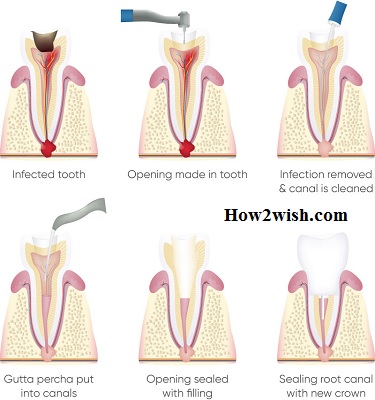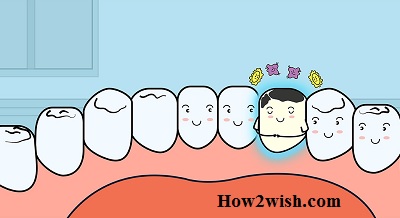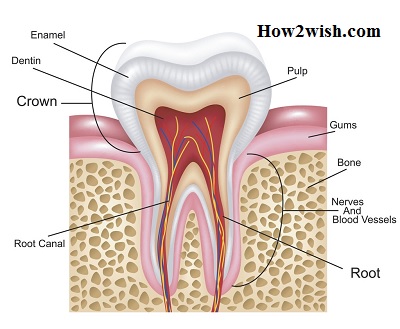Do you know about Cleaning Tooth Canals? Channel cleaning is a rather complicated procedure. There is even a separate area of dentistry that deals with this – endodontics. Dentists from this field work with complex types of caries, when the infection affects the periodontium and pulp and spreads to the root. Their main task is to suppress the infection and restore the functionality of the dental units. If timely therapy is not started, this can lead to the destruction of bone structures. In the future, they will need to be removed. In the article, the specialists of the dental clinic “Dentika” will tell in detail and show in the video what it is to clean the canals in the tooth, why such treatment is necessary for pulpitis and other problems, how they are cleaned, and how long they clean.

What is
This is the anatomical space within the root, located within the coronal portion. It consists of a pulp chamber, which has branches that connect it to the surface, or adjacent tubules.
With the defeat of this structure, a long and complex therapy is required. One visit to the dentist will not be enough. It will take at least 2-3 visits to the doctor. This is because, in the dental unit, there can be either one or several pathologies. Even a qualified and experienced specialist is not able to detect them with the naked eye. Therefore, x-rays are required. The photo displays all the channels of the tooth that need to be cleaned.
When to Treat
Many believe that the pathological state of the space inside the root is always accompanied by acute pain. However, in 90% of cases, destructive changes occur with moderate pain, and sometimes even with slight discomfort. But if you start the inflammatory process, it will affect most of the soft tissues. Over time, this will completely lead to their necrosis.
Most often, patients visit the dental office when there is a suspicion of developing caries. During the diagnostics, the specialist discovers that additional cleaning of the tooth canals is also required.
It is carried out exclusively by indications. When an infection spreads, this is often the only way to save a dental unit. Let’s look at the main symptoms that cannot be ignored. If they occur, you should immediately contact your dentist.
Pain during the day
Unpleasant sensations are manifested by mechanical action. For example, when chewing solid food, hygienic cleaning of the oral cavity. Moreover, the pain, in this case, is short-term, and moderate. Does not require anaesthesia, and passes on its own.
Soreness at night
It is aching and permanent. Because of her, a person cannot sleep and often wakes up. This indicates the development of an acute inflammatory process or an exacerbation of the chronic disease.
Reaction to cold and hot
Hypersensitivity is the main sign of destructive changes that occur in the canals of the tooth, because of which they then need to be washed and cleaned. Response to elevated and low temperatures is due to the appearance of caries, and the loosening of hard tissues.
Darkening on the crown
Gray, brown, and yellowish spots on the walls indicate irreversible changes in the dentin. This occurs as a result of carious lesions, and the development of pulpitis. The reason lies in the violation of innervation, nutrition, and blood supply.
Redness, swelling, thickening
All of the above signs + soreness indicate that the ligaments are damaged, and the nerve ending is destroyed. A granuloma is formed at the top of the affected dental unit. Usually, this pathology occurs due to poor-quality filling, leaving fragments of the tooth and instrument inside.
Modern methods of treatment
Even though the problem is dangerous, it is still curable. If measures are taken in time, it is possible to cope with it completely without the development of complications in 94% of cases.
How Mouth Ulcers are Diagnosed, Cured and Prevented
Therapeutic
The purpose of this therapy is to:
- Removal of tissues as a result of the decay of the pulp, the remains of infected dentin;
- Disinfection of the root space;
- High-quality preparation for irrigation, and installation of seals.
Before root preparation, pre-endodontic restoration is to be carried out at the time of treatment. During it, the tooth walls are restored to isolate the cavity from saliva.
Surgical
The use of this method of cleaning the canals of the tooth is inevitable in patients diagnosed with granulating periodontitis. With an extensive lesion, resection of the apex, craniotomy, amputation of the root, and hemisection is performed.
Does it hurt to heal
Dentistry has come a long way. Thanks to the use of modern technologies, drugs, and equipment, patients do not experience pain during treatment. The anesthetics used are safe for the body and highly effective for pain relief. Even with an operative impact, a person does not feel anything. Before starting to clean the dental canals, the dentist waits for a complete freeze. Moreover, it comes quickly, and the effect persists for a long period.

Preparing for cleaning
First of all, the doctor must collect all the necessary information. To do this, he does the following:
- Questioning the patient. The specialist is interested in the duration and nature of pain, and allergic reactions to certain medications.
- Conducting an inspection.
- Appointment of instrumental diagnostic methods.
If a pregnant woman came to the appointment, a risograph is assigned instead of an x-ray. However, the most informative is considered to be a 3D image taken with a tomograph. Based on the data obtained, the dentist determines the length of the anatomical space to select the most suitable tool, a needle for cleaning the canals of the tooth.
There is also an even more efficient way to determine the extent of the cavity. For this, an apex locator is used, which displays a picture on the monitor, which makes it possible to determine the distance from the top of the root of the input instrumentation. This avoids breakage during the procedure.
Also at this stage, endoscopic devices are selected, which are made of high-strength wire. Some of them are used in difficult cases when patency is difficult. Tools with different sections can be used:
- Square. They have increased strength, but they eliminate dentin filings worse.
- Triangular. They have good flexibility but are less durable.
All tools used can be divided into several groups:
- For expansion;
- To increase the diameter of the mouth;
- To facilitate passage;
- To remove the remains of fixtures and materials.
Also, during the treatment period, a microscope can be used to ensure high accuracy of manipulations.
Before therapy, a rubber dam is placed. This is a latex curtain up to 15×15 cm, the installation of which has the following advantages:
- 100% dry and protected;
- Prevention of entry into the cavity of saliva, pathogenic microorganisms, and irrigant;
- Facilitating the work of the doctor;
- Reducing the risk of adverse reactions and complications;
- Patient comfort;
- Saving time.
Next, the old fillings are removed, and the affected pulp is removed. Only after that proceed to further actions.
How channels are cleaned
The procedure can be carried out in several ways:
- Manual. Cleaning is carried out manually using special tools. It is difficult and lengthy, both for the patient and for the dentist.
- Mechanical. Specialized tools made of nickel, titanium, and endo motor are used. This technology allows you to effectively clean even curved cavities.
- Ultrasonic. Narrow gaps expand, and with the help of nozzles, it is possible to remove all the remnants of the pulp.
To obtain a better result, all methods should be used simultaneously. However, the choice of the technology used falls on the shoulders of the doctor, who relies on the characteristics of the disease. After the work is completed, seals are installed.
Features of treatment
The treatment regimen is selected individually for each patient. It is compiled depending on the anatomical structure, the neglect of the case, and the age of the person.
Incisors
They are quite narrow, which complicates the preparation. It is also difficult to study the bottom. This is because there is a protrusion (“shoulder”), which makes it problematic to insert an endodontic pin. For normal access, they are suitable from the back of the crown.
Wisdom teeth
They are not responsible for functionality in any way, so it makes no sense to treat and put a seal on them. With the development of the inflammatory process, they are simply removed.
Dairy dental units
They are treated during the formation of the root system. In order not to damage the rudiments of the indigenous, specialized pastes are used (iodoform, zinc oxide eugenol). They do not harm the growing body and quickly dissolve.

Stages of therapy
Consider step by step how therapeutic measures are carried out.
Elimination of caries
Darkened areas of enamel are removed with a drill. Also, during the action, the doctor assesses the degree of damage to the dentin. Based on this, he decides on the need to restore the walls and determines the number of cavities and ways to expand them.
Pulp removal
This procedure is called depulping. It is carried out in several steps:
- Removing the roof of the pulp chamber.
- Mouth opening.
- Creation of a funnel.
- Content cleaning.
During the manipulation, neurovascular tissue is removed.
Determining the length of root canals
The working length is the distance from a certain point on the crown to its physiological top. An apex locator is used to measure this distance. The operation of the device is based on the principle of resistance. Please note that this parameter will be different for hard and soft structures.

A metal instrument with a fixed contact is inserted into the cavity and advanced inwards until the constriction ends. When it reaches the maximum, the circuit will close and the device will start signaling.
Sanitation
This means the elimination of organic debris and bacteria with the help of specialized instruments (manual or endoscopic handpiece) and antiseptic solutions.
Formation
This process is aimed at:
- Creation of an anatomically correct funnel-shaped, conical shape;
- Complete reaching the top;
- The formation of an apical constriction;
- Removal of residual pulp elements.
That is, this is the final stage of cleaning the canals of the tooth. Further manipulations are aimed at closing the voids and giving the dental unit functionality and original appearance.
Filling
Various technologies can be used:
- Paste. The hole is filled with a special compound, which hardens after a certain period. However, the method is considered obsolete and is rarely used in modern dentistry.
- Pin. The polymerizing mixture is introduced with a gutta-percha rod. The method is not the best, as it often provokes complications.
- Lateral condensation of cold gutta-percha. Reliable and affordable option.
- Vertical condensation of hot gutta-percha. The most efficient technique.
Please note that the decision to use this or that technology is made by the doctor. But he can offer the patient a choice of several types of filling at once.
Crown restoration
To give a finished and aesthetic appearance, the walls are constructed from photopolymer materials.
Will cleaning save a tooth unit that is more than 50% destroyed
Cleaning the root canal after removing the nerve of a dead tooth can help. Only in this case, instead of a filling, a prosthesis or a ceramic crown is installed. The rest of the procedure is carried out in the same way as described earlier.
Can there be complications?
From undesirable consequences, no one is 100% insured. If the pain does not go away but only intensifies, and does not allow you to sleep, and chew normally, you need to see a doctor. Most likely, the cavities were not cleaned completely.
To reduce the risk of adverse reactions, you need to contact only proven dentistry. Make an appointment at our dental clinic “Dentika” for treatment by qualified specialists with extensive experience.
When is removal necessary?
Resection even after cleaning may be required in the following cases:
- Repeated refilling;
- Pain syndrome of unknown etiology, which does not go away, and sometimes becomes stronger;
- Loosening, destruction of dentin tissues;
- Periodontal atrophy, which leads to further loosening of the dental unit;
- Anatomical features of the structure, due to which there are difficulties in performing therapeutic measures.
Even if the tooth has to be removed, there is nothing to worry about, no need to be scared. Thanks to modern technology, you can restore an attractive smile. For this, crowns, prostheses, and implants can be used.

How much does it cost to clean a cavity?
The cost of the work will vary depending on the following factors:
- The number of root branches;
- Costs of polymeric materials;
- The need for concomitant relief of inflammatory and purulent processes;
- Installation of additional orthodontic structures and so on.
Of course, the price of the procedure will vary depending on the dental clinic, region, and doctor’s qualifications. You can get acquainted with the price list of dentistry “Dentika” on our website.
Final Thought on Cleaning Tooth Canals:
We told what cleaning of the canals of the tooth means, in what cases and why the cavities need to be cleaned, and how they are washed and cleaned. Even though the work is very painstaking and difficult, for the patient it is painless and does not cause discomfort. For all manipulations to be performed qualitatively, there are no adverse reactions and complications, one should responsibly approach the choice of a specialist. After collecting an anamnesis and conducting a diagnosis, he will select the optimal therapy regimen that will allow you to forget about problems with the dentition for a long time.